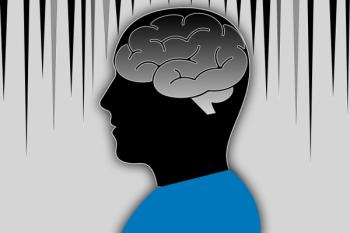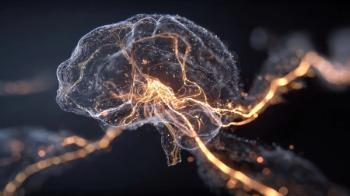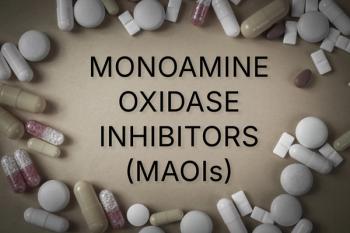
- Vol 38, Issue 2
- Volume 02
Opportunities in Managing Treatment-Resistant Depression and Tardive Dyskinesia
This CME describes current strategies and recent advances in treatment.
CONTINUING MEDICAL EDUCATION
This CME is a follow-up from the 2021
Claim Your CME Credit at gotoper.com/go/psych2021print
Treatment-resistant depression (TRD) and
Recent Additions to Treatment-Resistant Depression Options
Up to 1 in 5 American adults are estimated to meet the criteria for
Guidelines from the Canadian Network for Mood and Anxiety Treatments provide an
Considerations that support adding an adjunctive therapy include a history of 2 or more
Therapies that may provide additional options for patients with TRD include the following:
ESKETAMINE NASAL SPRAY. In 2019, this ketamine enantiomer became the first FDA-approved therapy for TRD that targets the glutamatergic system.4 The
INTERMITTENT THETA BURST STIMULATION (ITBS). Approved by the FDA in 2018 for treating adults with TRD, iTBS provides 600 pulses of theta burst stimulation in 3 minutes, which are intended to mimic natural theta rhythms that are associated with the improved induction of synaptic long-term potentiation.6,7 The therapy demonstrated noninferiority to repetitive transcranial magnetic stimulation, delivered in 37.5-minute sessions, in 414 adults with nonresponse to an antidepressant or inability to tolerate at least 2 trials of antidepressants. The primary outcome was reduction in Hamilton Depression Rating Scale-17 score. The most common adverse events in the iTBS group were headache, fatigue, and dizziness, with a similar number of serious adverse events in both groups.7
VMAT2 Inhibitors for Tardive Dyskinesia
Tardive dyskinesia (TD) is a concern with nearly all dopamine receptor blocking agents (DRBAs), with the possible exception of clozapine.8 Though newer antipsychotics have a lower likelihood of causing TD, they are still associated with risk. A meta-analysis of randomized controlled trials comparing antipsychotic therapies used for at least 3 months found an annualized TD incidence of 6.5% with first-generation antipsychotics versus 2.6% with second-generation agents.9 Given the growing use of these drugs, the number of individuals at risk of TD may be rising.8,10
The availability of the following vesicular monoamine transporter type 2 (VMAT2) inhibitors has provided new options for improving the quality of life in patients with TD; these work by reducing the presynaptic storage and release of dopamine, without the impact of nonselective VMAT inhibition such as the bronchospasm, nausea, and hypotension that can occur with reserpine.8,10
In 2017, the FDA approved
The agency also granted approval to valbenazine in 2017 for treating adults with TD.8 The drug was associated with significantly improved AIMS scores compared with placebo in patients who were typically continuing to use DRBAs. It is taken as a once-daily dose, and the
In its new practice guidelines for schizophrenia, the
References
1. Ruberto VL, Jha MK, Murrough JW.
2. Voineskos D, Daskalakis ZJ, Blumberger DM. Management of treatment-resistant depression: challenges and strategies. Neuropsychiatr Dis Treat. 2020;16:221-234. doi:10.2147/NDT.S198774
3. Kennedy SH, Lam RW, McIntyre RS, et al; CANMAT Depression Work Group.
4. Kasper S, Cubała WJ, Fagiolini A, Ramos-Quiroga JA, Souery D, Young AH. Practical recommendations for the management of treatment-resistant depression with esketamine nasal spray therapy: Basic science, evidence-based knowledge and expert guidance. World J Biol Psychiatry. Published online November 12, 2020. doi:10.1080/15622975.2020.1836399
5. Spravato. Prescribing information. Janssen Pharmaceutical Companies; 2020. Accessed December 9, 2020.
6. Mendlowitz AB, Shanbour A, Downar J, et al. Implementation of intermittent theta burst stimulation compared to conventional repetitive transcranial magnetic stimulation in patients with treatment resistant depression: a cost analysis. PLoS One. 2019;14(9):e0222546. doi:10.1371/journal.pone.0222546
7. Blumberger DM, Vila-Rodriguez F, Thorpe KE, et al. Effectiveness of theta burst versus high-frequency repetitive transcranial magnetic stimulation in patients with depression (THREE-D): a randomised non-inferiority trial. Lancet. 2018;391(10131):1683-1692. doi:10.1016/S0140-6736(18)30295-2
8. Bashir HH, Jankovic J. Treatment of tardive dyskinesia. Neurol Clin. 2020;38(2):379-396. doi:10.1016/j.ncl.2020.01.004
9. Carbon M, Kane JM, Leucht S, Correll CU. Tardive dyskinesia risk with first- and second-generation antipsychotics in comparative randomized controlled trials: a meta-analysis. World Psychiatry. 2018;17(3):330-340. doi:10.1002/wps.20579
10. Caroff SN. Recent advances in the pharmacology of tardive dyskinesia. Clin Psychopharmacol Neurosci. 2020;18(4):493-506. doi:10.9758/cpn.2020.18.4.493
11. Austedo. Prescribing information. Teva Pharmaceuticals USA, Inc; 2020. Accessed December 9, 2020.
12. Ingrezza. Prescribing information. Neurocrine Biosciences, Inc; 2020. Accessed December 8, 2020.
13. The American Psychiatric Association Practice Guideline For The Treatment of Patients With Schizophrenia. 3rd ed. American Psychiatric Association; 2021. ❒
This activity is supported by educational grants from Neurocrine Biosciences, Inc. and Supernus Pharmaceuticals.
Articles in this issue
almost 5 years ago
The Cardiovascular Consequences of Drug Usealmost 5 years ago
Positivism and Heart Health: Issues for Psychiatristsalmost 5 years ago
Understanding the QTcalmost 5 years ago
A Psychiatrist Weaving Conceptual and Empirical Workalmost 5 years ago
Ink Stained for Lifealmost 5 years ago
Spike in Health Care Cyber Attacksalmost 5 years ago
Pain and Smoking: Is There an Association?almost 5 years ago
The Onealmost 5 years ago
Neuropsychiatric Symptoms of Multiple SclerosisNewsletter
Receive trusted psychiatric news, expert analysis, and clinical insights — subscribe today to support your practice and your patients.











